Robert Campin (Late Gothic & Early Renaissance)
Being one of the greatest contributors to the new painting style in the 15th century, Robert Campin’s works marked the transition from the Gothic to Renaissance in art. Some of his most famous works include Portrait of a Man and Portrait of a Woman, Thief on the Cross and The Seilern Triptych.
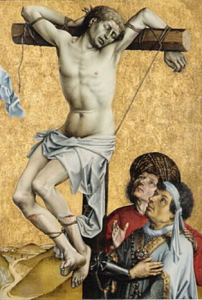
Thief on the Cross, fragment from a lost altar, 1420
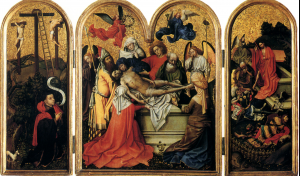
The Seilern Triptych, 1425
Campin, along with Rogier van Der Weyden and Jan van Eyck, became influential in the new developed art of the century called Flemish art. While I was researching on Campin’s works, some of the things that stood out to me was his realistic approach in displaying contrast and composition. In my opinion, Campin’s observation of space and perspective had led to the change in his art style. In the Mérode Altarpiece (1427), Campin showed a certain understanding of space between foreground and background elements. However, in comparison to the complex composition we see in The Werl Triptych (1438), the perspective seems much more realistic and lively. Although his art style was greatly inspired by the biblical figures in manuscript illumination, Campin showed his attention to details from the way he tackled tonal contrast of the drapery fabric and Saint Barbaras’s neck in The Werl Triptych.
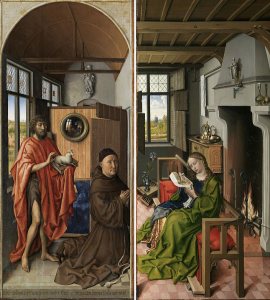
The two surviving wings of The Werl Altarpiece, 1438. (Right panel: Saint Barbara, Left panel: Saint John and donor)
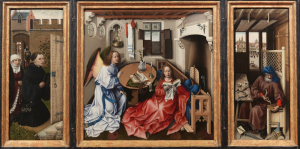
Robert Campin and workshop, Mérode Altarpiece, 1427.
Reference:
https://www.britannica.com/biography/Robert-Campin
https://www.britannica.com/art/Western-painting/Western-Dark-Ages-and-medieval-Christendom
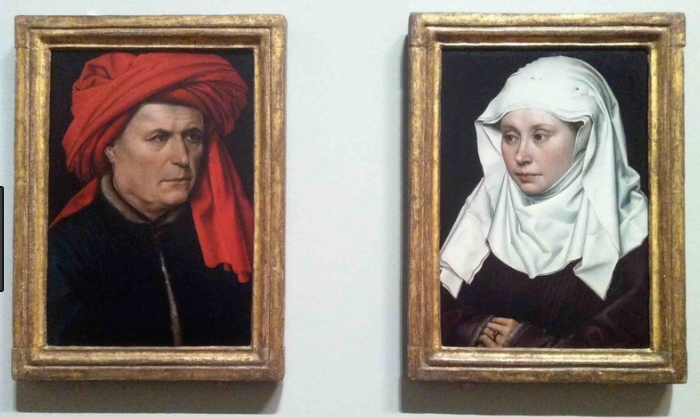
Recent Comments